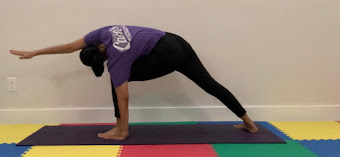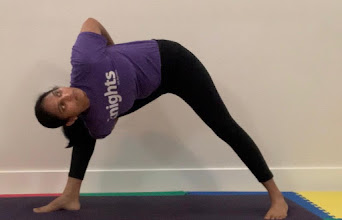Halasana:
Steps:1. Lie down in samastithi.
2. Exhale lift both your legs along with your hips and bring it all the way above your head. keep your arms slightly folded and palms supporting your lower back. Keep your eyes closed and chin down at all times, knees straight.
3. On inhaling, slowly bring back your legs perpendicular to the floor. Shoulders firmly pressed on the ground and Chin should be locked. Palms still supporting the back.
4. Exhale, from Sarvangasana lower both the legs towards and beyond the head and toes should be touching the ground.
On inhaling, bring your legs back straight to Sarvangasana.
Exhaling, take your legs back to the previous position.
Inhale gently drop your legs down without lifting your head up.
- Abdomen
- Hamstrings
- Thighs
- Shoulders
- Spine
Modifications:
- Pillow / chair / wall can be used behind, if your feet can't reach the floor.
Benefits:
- Calms the brain
- Stimulates the abdominal organs and the thyroid gland
- Stretches the abdominal organs and the thyroid gland
- Reduces stress and fatigue
- Therapeutic for backache, headache, infertility, insomnia, sinusitis














